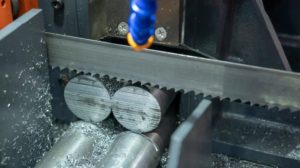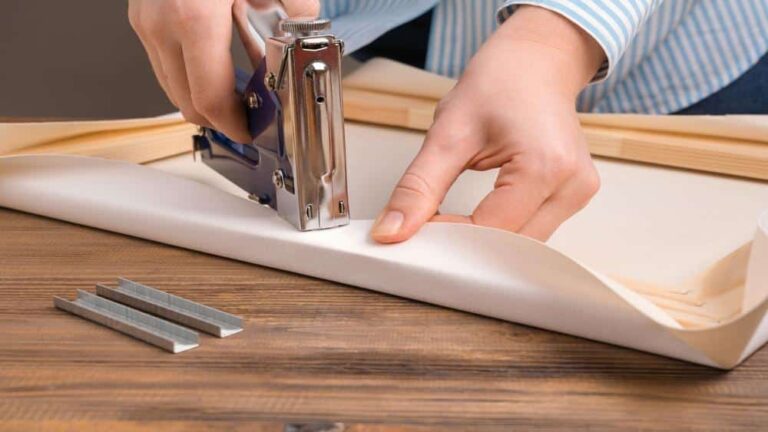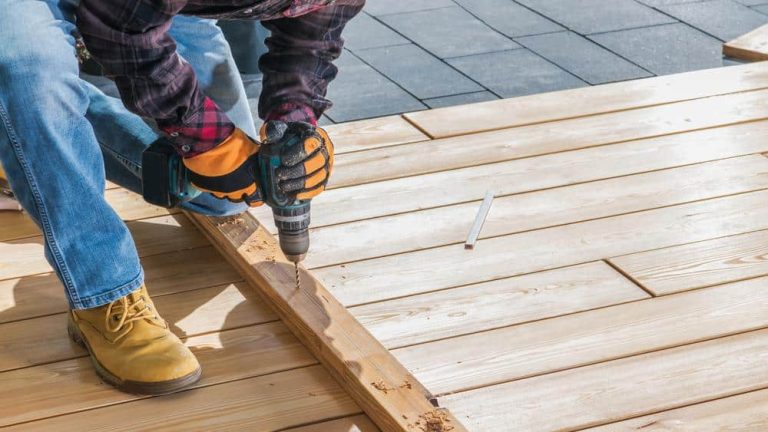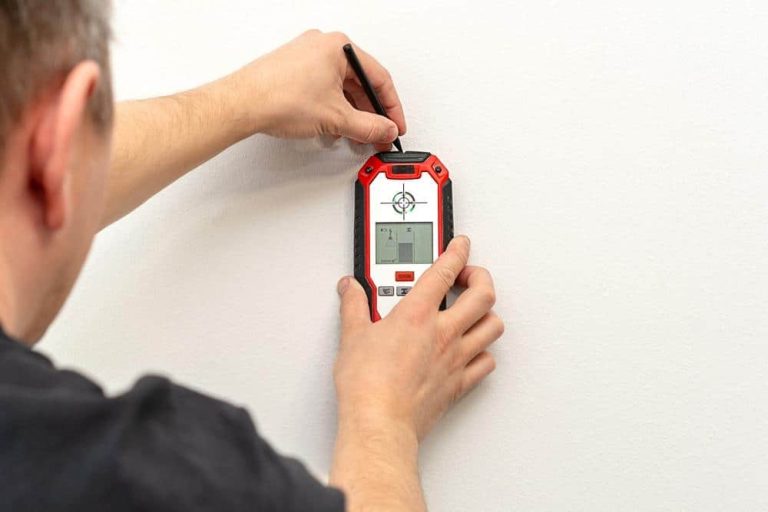Choosing the right band saw blade can make all the difference in achieving precise and efficient cuts. With so many different blade types and specifications available, knowing which one to choose can be overwhelming. This guide will walk you through the key factors to consider in How To Choose A Band Saw Blade.
Also Read: Best Band Saw Blade For Stainless Steel: In 2023 Reviews & Guide
1. Introduction
what a band saw is and what it’s used for
Band saws are versatile and powerful tools in woodworking, metalworking, and other industries. They are known for making straight and curved cuts through thick materials quickly. A band saw consists of a long blade with teeth that rotate on two wheels, which can be adjusted to different speeds and angles depending on the cut material.
Importance of choosing the right band saw blade
Choosing the right blade is crucial when using a band or saw. The blade’s thickness, width, tooth pitch, and set all play a role in determining its suitability for a particular job. Using the wrong blade can result in poor performance, damaged materials, and even injury to the user.
The different types of band saw blades
Several types of band saw blades are available on the market, each with strengths and weaknesses. For example, woodcutting blades are designed with fewer teeth and wider gullets to prevent clogging. In comparison, metal cutting blades have more teeth and narrower gullets to ensure a smoother cut. Other blade types include resaw blades, hook tooth blades, and skip tooth blades, each with unique applications.
This article will provide a comprehensive guide to choosing the right band saw blade for your needs. We will explain the basics of band saw blades, including tooth pitch, set, and rake, and discuss the different factors to consider when selecting a blade. We will also offer tips for maintaining your band saw blade to prolong its life and ensure maximum performance. By the end of this guide, you can confidently choose the perfect blade for your next project.

2. Understanding the Basics of Band Saw Blades
What is a band saw blade?
Band saw blades are a crucial component of any band saw machine. Understanding their properties and applications is crucial for any user. A band saw blade is a continuous loop of metal wound around two wheels and used to cut through various materials, including wood, metal, and plastic.
Different types of band saw blades and their applications (wood, metal, etc.)
The different band saw blades are designed for specific applications, each with unique features and properties that make them suitable for different tasks. For example, blades designed for cutting wood have fewer teeth per inch and wider gullets, allowing fast and efficient cutting without clogging. In contrast, blades for cutting metal have more teeth per inch and narrower gullets, which produce smoother and more precise cuts.
Tooth pitch, set, and rake explained
Tooth pitch, set, and the rake is essential factors when selecting a band saw blade. Tooth pitch refers to the distance between the teeth on the blade, affecting the type of materials that can be cut. Blades with a high tooth pitch are suitable for cutting thin materials. In contrast, blades with a low tooth pitch are better for cutting thicker materials.
Set refers to the angle of the teeth on the blade, which affects the width of the cut and the amount of waste produced. A positive set angle produces a broader cut and more waste. An opposing set angle produces a narrower cut and less waste.
Rake refers to the angle of the teeth with the blade’s cutting direction, which affects the aggressiveness of the blade. A positive rake angle produces a more aggressive blade, while a negative one produces a less aggressive one.
Gullet depth and its impact on performance
Gullet depth is another crucial factor when selecting a band saw blade. The gullet is the space between the teeth on the blade, and its depth affects its ability to remove waste material. A more bottomless gullet is better for cutting thicker materials, allowing faster and more efficient waste removal.
Choosing the right blade thickness for your project
Choosing the right blade thickness is also crucial for achieving the desired cut. Thicker blades are more durable and can handle more prominent and demanding cuts. In comparison, thinner blades are better for making intricate and detailed cuts.
Understanding blade width and its relationship with the type of cuts
Finally, the blade’s width also plays a role in determining its suitability for a particular job. Wider blades are better for straight cuts, while narrower blades are better for curved ones.
By understanding the basics of band saw blades, including their different types, tooth pitch, set, rake, gullet depth, thickness, and width, users can select the appropriate blade for their particular application, resulting in efficient and precise cuts.
FAQs
What’s the difference between a regular tooth and a hook tooth blade?
Choosing the right blade for your band saw is essential for achieving the desired results. One of the most common questions people have when selecting a blade is whether to use a regular or hook tooth blade. The answer is quite simple. A regular tooth blade has teeth evenly spaced apart, whereas a hook tooth blade has teeth set at an angle. The hook tooth blade is ideal for making curved cuts because it can easily follow the material’s contours. On the other hand, a regular tooth blade is better for making straight cuts as it provides a smoother finish. However, remember that the right blade for your project may depend on other factors, such as the type of material being cut, the thickness of the material, and the desired finish.
How does blade set affect my cuts?
The blade set refers to the teeth’s inclination to either side, which creates a space in the kerf, allowing the blade to move more freely. The blade set affects the cut’s smoothness and efficiency by controlling the amount of sawdust and friction created during the cutting process. The amount of blade set determines the aggressiveness of the blade, which affects how fast the blade can cut through the material. The greater the set, the faster the blade can cut. However, a blade with too much set can lead to rough, uneven cuts, while a blade with too little set can cause the blade to bind or break. Therefore, choosing the correct blade set is based on the material you’re cutting and the desired finish.
Do I need to use a different blade for resawing?
Resawing is a technique to cut a thick board into thinner boards by making parallel cuts. It would be best to have a band saw blade specifically designed for resawing to perform this technique. A resaw blade has fewer teeth per inch, a wider blade, and a more bottomless gullet, allowing it to cut through thick boards easily. The wider blade reduces blade deflection, which can cause the blade to wander off course. The more bottomless gullet helps clear sawdust and maintain the blade’s cutting performance. Using a regular blade for resawing may result in poor-quality cuts, blade breakage, or even injury. Therefore, it’s recommended to use a specialized resaw blade for the best results.

3. Factors to Consider When Choosing a Band Saw Blade
Band saws are versatile tools that can be used for a wide range of applications, but choosing the right blade for the job is crucial to achieving the best results. Here are some factors to consider when selecting a band saw blade:
Material of the Workpiece
The material of the workpiece is a crucial consideration when choosing a band saw blade. Different blades are designed to work with specific materials, such as wood, metal, plastic, or composite materials. Choosing the right blade for your workpiece can ensure clean, precise cuts and extend the life of your blade.
Type of Cut
The type of cut you need to make is another essential consideration. Band saw blades come in different tooth configurations, including raker, wave, and skip. Each is designed for specific cuts, such as ripping, crosscutting, or resawing. Selecting the appropriate blade for the cut you need can enhance the quality of the finished product.
Blade Length and Compatibility
The length of your blade and its compatibility with your band saw are also vital factors. A blade that is too long or too short for your saw can cause issues such as blade breakage, poor tracking, or uneven cutting. Check your saw’s manual to ensure that you are selecting a blade that is compatible with your saw.
Blade Durability and Maintenance
Band saw blades are designed to last for a certain amount of time, depending on the quality of the blade and how often it is used. Choosing a high-quality blade and maintaining it properly can extend its life and ensure optimal performance. Regular maintenance, such as cleaning and lubrication, can prevent rust and corrosion and ensure smooth cutting.
Teeth per Inch (TPI)
The number of teeth per inch (TPI) on a band saw blade determines the finish of the cut. Blades with fewer teeth per inch are designed for rough cuts, while blades with more teeth per inch produce a smoother finish. Choosing the right TPI for your application can help you achieve the desired result.
Cost and Value for Money
Finally, cost and value for money are essential factors to consider when choosing a band saw blade. While it is tempting to choose a cheaper blade, investing in a higher-quality blade can save you money in the long run by lasting longer and performing better. Compare prices and read reviews to ensure you are getting the best value for your money.
By considering these factors when choosing a band saw blade, you can ensure that you select the right blade for your specific application, resulting in clean, precise cuts and optimal performance.
FAQs
Can I use a wood blade to cut metal?
The short answer is no, you can’t. Why? Well, it all comes down to the material properties of the blade. A wood blade is designed to cut through soft materials like wood, meaning it has a higher TPI (teeth per inch) count and a shallower gullet depth. These features are ideal for cutting through wood but unsuitable for cutting through more rigid materials like metal. Metal blades, on the other hand, have a lower TPI count and a deeper gullet depth to allow for the removal of larger metal chips during the cutting process.
How often should I replace my band saw blade?
The answer to this question is more complex than you might think. It depends on several factors, such as the material you’re cutting, how often you use the saw, and how well you maintain the blade. Generally, a good rule of thumb is to replace the blade when you notice a decrease in cutting performance or when the blade becomes damaged or worn out. Keeping the blade clean and correctly tensioned can help extend its lifespan. However, it’s still important to regularly inspect the blade and replace it when necessary.
Are more TPI always better for a cleaner cut?
This is a common misconception among band saw users. While it’s true that a higher TPI count can result in a smoother finish, it’s not always the case. The number of teeth per inch should be chosen based on the material being cut and the type of cut being made. For example, a rip cut through thick wood requires fewer teeth per inch than a crosscut through thin stock. Additionally, a blade with too many teeth per inch can cause the blade to heat up and wear out more quickly. Therefore, choosing the correct TPI count for your cutting needs is essential.
4. Tips for Proper Blade Maintenance
Blade maintenance ensures that your band saw blade lasts long and performs optimally. This section will share tips to help you maintain your blade and get the best results from your saw.
How to clean and store your band saw blade
Firstly, cleaning and storing your blade correctly is vital to keeping it in good condition. After each use, it’s essential to wipe down the blade to remove any debris or dust that may have accumulated during cutting. An excellent way to do this is to use a clean cloth or brush and wipe along the teeth of the blade. It’s also a good idea to apply a protective coating, such as light machine oil, to the blade to prevent rusting and corrosion.
Keeping your blade in a cool, dry place, free from moisture or humidity, is essential. It’s also recommended to store the blade flat or to hang it vertically to prevent it from bending or warping.
Best practices for prolonging blade life
In addition to proper cleaning and storage, there are some best practices you can follow to prolong the life of your blade. One of these is to avoid forcing the blade through the cut material. Let the blade work, and don’t push it harder than necessary. It’s also essential to ensure that the blade is tensioned correctly before each use, as this helps to prevent it from becoming loose or bending during cutting.
Signs that it’s time to replace your blade
Finally, it’s important to recognize when to replace your blade. Signs that it may be time to replace your blade include excessive wear or damage, such as missing or broken teeth, or a blade consistently producing poor-quality cuts. In general, replacing your blade every six months to a year is recommended, depending on usage and frequency of maintenance.
By following these tips for proper blade maintenance, you can ensure that your band saw blade lasts for a long time and performs optimally, giving you clean, precise cuts every time.
FAQ
Can I sharpen my band saw blade?
The answer to this question depends on the type of blade you have. Most carbide blades cannot be sharpened, while high-speed steel (HSS) blades can typically be sharpened several times before they need to be replaced. However, it’s worth noting that sharpening a blade requires specialized equipment and expertise, so it may not be a task you want to take on yourself.
Should I oil my blade before or after use?
Some people swear by oiling their blades before use, while others prefer to do it after. The truth is that both approaches can be practical. Oiling before use can help prevent rust and reduce friction, while oiling after use can help protect the blade during storage. Ultimately, the best approach will depend on your personal preference and the specific needs of your blade.
How do I know if my blade needs to be replaced?
There are a few signs that can indicate it’s time to replace your blade. If you notice excessive wear or damage, such as missing or broken teeth, it’s a good indication that the blade has reached the end of its life. Additionally, suppose you have to apply more pressure than usual to make cuts or notice unusual vibrations. In that case, it could be a sign that the blade is dull or damaged.
5. FAQs: Band Saw Blades
What’s the best blade for cutting thick hardwoods?
A wide blade with fewer teeth is generally best for cutting thick hardwoods. This blade type removes more material per pass, making the cutting process faster and more efficient.
Can I use a metal blade to cut plastic?
Using a metal blade to cut plastic is possible, but it is not recommended. A blade designed specifically for cutting plastic is preferable because it produces a cleaner cut and reduces the plastic’s melting risk.
What causes my blade to drift off course while cutting?
Several factors can cause a band saw blade to drift off course while cutting. These include improper blade tension, worn or damaged guides, and feeding the material too quickly. Adjusting these factors can help keep the blade on track.
How can I improve my band saw blade’s performance?
You can take several steps to improve your band saw blade’s performance. These include selecting the right blade for the job, maintaining proper blade tension, and keeping the blade clean and debris-free.
6. Conclusion
As we conclude this article, let’s recap the essential points we’ve discussed. Choosing the right band saw blade requires considering several factors, such as the material of the workpiece, type of cut, blade length and compatibility with your band saw, blade durability and maintenance, teeth per inch (TPI), and cost.
Final recommendations for selecting and maintaining a band saw blade
When it comes to maintaining your band and saw blade, keeping it clean and storing it properly is crucial. Using best practices for blade maintenance and being mindful of signs that it’s time to replace your blade can also help prolong the life of your band saw blade.
Based on the tips and information shared in this article, we recommend selecting a band saw blade that suits your specific needs and using it correctly to achieve the best results. Experimenting with new blade types and techniques can also help you improve your band sawing skills.
In conclusion, a properly selected and maintained band saw blade can make all the difference in your woodworking projects. So, take action and use these tips to achieve better results with your band saw! Using the guidelines in this article, you can choose and maintain a band saw blade that’s perfect for your needs.





